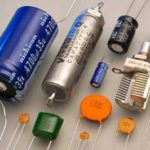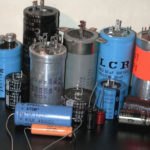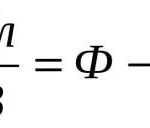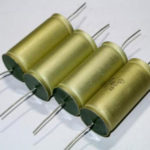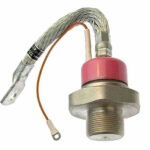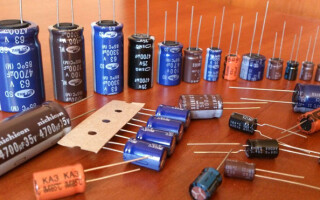The element base for designing electronic devices is becoming more complex. Devices are combined into integrated circuits with specified functionality and software control. But at the heart of the development are the basic devices: capacitors, resistors, diodes and transistors.
Contents
What is a capacitor
A device that stores electricity in the form of electrical charges is called a capacitor.
The amount of electricity or electric charge in physics is measured in coulombs (Cl). Electrical capacitance is counted in farads (F).
A solitary conductor with an electrical capacity of 1 farad is a metal ball with a radius equal to 13 solar radii. Therefore, a capacitor includes at least 2 conductors that are separated by a dielectric. In simple designs, the device is paper.
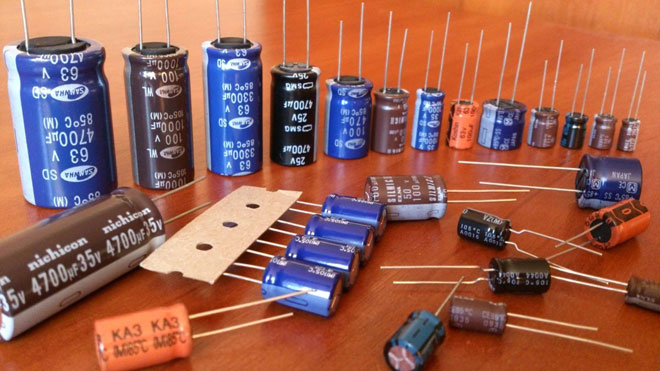
The capacitor in a DC circuit operates when the power supply is turned on and off. Only during transients does the potential on the coils change.
The capacitor in an AC circuit is recharged with a frequency equal to the frequency of the power supply voltage. As a result of continuous charges and discharges, current flows through the element. Higher frequency means faster recharge of the device.
The resistance of a circuit with a capacitor depends on the frequency of the current. At zero DC frequency, the resistance value tends to infinity. As AC frequency increases, the resistance decreases.
Where capacitors are used
The operation of electronic, radio and electrical devices is impossible without capacitors.
In electrical engineering, they are used to shift phases when starting asynchronous motors. Without phase shifting, a three-phase induction motor in an alternating single-phase network will not function.
Capacitors with a capacitance of several farads are ionic capacitors used in electric cars as motor power sources.
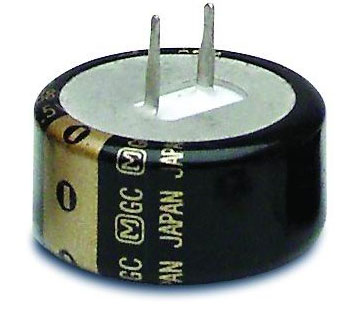
To understand why a capacitor is needed, you need to know that 10-12% of measuring devices operate on the principle of changing the electrical capacitance when the external environment parameters change. The capacitance response of special devices is used to:
- recording of weak movements through an increase or decrease in the distance between the shells;
- determination of humidity by recording changes in dielectric resistance;
- measuring the level of the liquid, which changes the capacity of the element when it is filled.
It is difficult to imagine designing automatics and relay protection without capacitors. Some protection logic takes into account the multiplicity of recharge of the device.
Capacitive elements are used in the circuits of mobile communication devices, radio and television equipment. Capacitors are used in:
- high and low frequency amplifiers;
- power supplies;
- frequency filters;
- sound amplifiers;
- processors and other microcircuits.
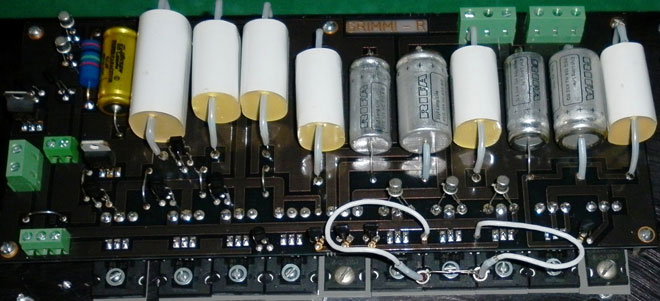
It is easy to find the answer to the question of what a capacitor is for by looking at the wiring diagrams of electronic devices.
How a capacitor works
In a DC circuit, positive charges are collected on one plate and negative charges on the other. Through mutual attraction, the particles are held together in the device, and the dielectric between them prevents them from connecting. The thinner the dielectric, the stronger the charges are connected.
The capacitor takes the amount of electricity needed to fill the capacitance, and the current stops.
With a constant voltage in the circuit, the element holds a charge until the power is turned off. It then discharges through the loads in the circuit.
Alternating current through a capacitor moves differently. The first ¼ period of oscillation is the moment of charge of the device. The amplitude of the charging current decreases exponentially, and by the end of the quarter it decreases to zero. EMF at this point reaches the amplitude.
In the second ¼ of the period EMF decreases and the cell begins to discharge. Decrease of EMF at the beginning is small and so is the discharge current. It increases according to the same exponential dependence. By the end of the period EMF is equal to zero, the current is equal to the amplitude value.
In the third ¼ of the oscillation period the EMF changes direction, goes through zero and increases. The sign of the charge on the terminals is reversed. The current decreases in magnitude and maintains its direction. At this point, the electric current is 90° ahead of the voltage in phase.
In inductance coils the opposite happens: the voltage is ahead of the current. This property is at the forefront of the choice of whether to use RC or RL circuits.
At the end of the cycle at the last ¼ of the oscillation the EMF falls to zero and the current reaches the amplitude value.
"Capacitance" discharges and charges 2 times per period and conducts alternating current.
This is a theoretical description of the processes. To understand how an element in a circuit works directly in the device, calculate the inductive and capacitive resistance of the circuit, the parameters of the other participants, and take into account the influence of the external environment.
Basic characteristics and properties
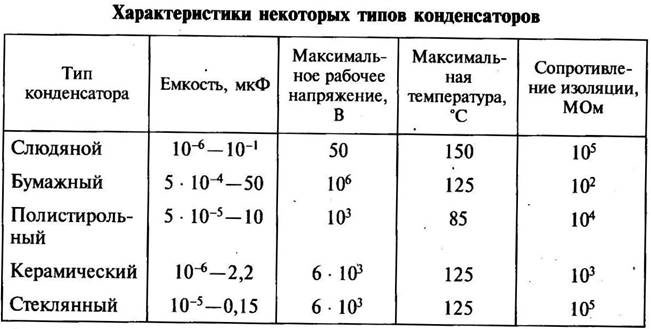
Capacitor parameters used to build and repair electronic devices include:
- Capacitance - C. It determines the amount of charge that the device holds. The value of the rated capacity is indicated on the case. Cells are connected in a circuit in parallel or in series to create the required values. Operational values are not the same as the calculated values.
- The resonant frequency is fp. If the current frequency is greater than the resonant frequency, the inductive properties of the element become apparent. This makes operation difficult. To provide the rated power in the circuit, it is wise to use the capacitor at frequencies less than the resonant values.
- The rated voltage is Un. To prevent element breakdown, the operating voltage is set lower than the rated voltage. This is indicated on the case of the capacitor.
- Polarity. If connected incorrectly, a breakdown and failure will occur.
- Electrical isolation resistance - Rd. Determines the leakage current of the device. In devices the parts are located close to each other. If the leakage current is high, parasitic coupling in the circuits is possible. This leads to malfunctions. Leakage current degrades the capacitive properties of the element.
- Temperature coefficient - TKE. The value determines how the capacitance of a device changes when the temperature of the medium fluctuates. The parameter is used when designing devices for use in harsh environments.
- Parasitic piezo effect. Some types of capacitors create noise in devices when they are deformed.
Capacitor types and types
Capacitive elements are classified according to the type of dielectric used in the design.
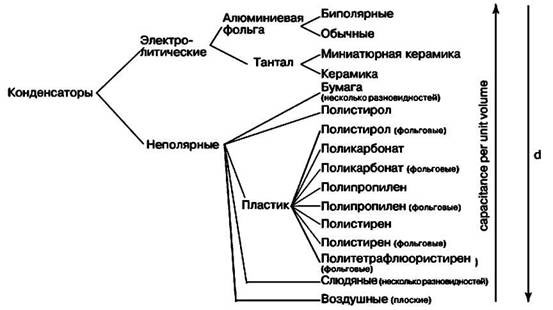
Paper and metal capacitors
Elements are used in circuits with DC or weakly pulsating voltages. The simplicity of design results in 10-25% lower performance stability and increased losses.
In paper capacitors, aluminum foil covers are separated by paper. The assemblies are twisted and placed in a cylindrical or rectangular parallelepipedic case.
The devices operate at temperatures of -60 ... +125°C, with rated voltages of low-voltage devices up to 1600V, of high-voltage ones - above 1600V and with a capacity of up to tens of μF.
In metal-paper devices, instead of foil, a thin layer of metal is applied to dielectric paper. This helps to make smaller elements. If insignificant breakdowns occur, the dielectric may self-repair. Metal-paper cells are inferior to paper cells in terms of insulation resistance.

Electrolytic capacitors
The design of products resembles paper capacitors. But in the manufacture of electrolytic cells, paper is impregnated with metal oxides.
In paperless electrolyte products, the oxide is applied to a metal electrode. Metal oxides have one-way conductivity, which makes the device polar.
In some models of electrolytic cells, the covers are made with grooves that increase the surface area of the electrode. Gaps in the space between the plates are eliminated by pouring electrolyte. This improves the capacitive properties of the product.
Large capacitance of electrolytic devices - hundreds of μF, is used in filters to smooth out voltage ripples.
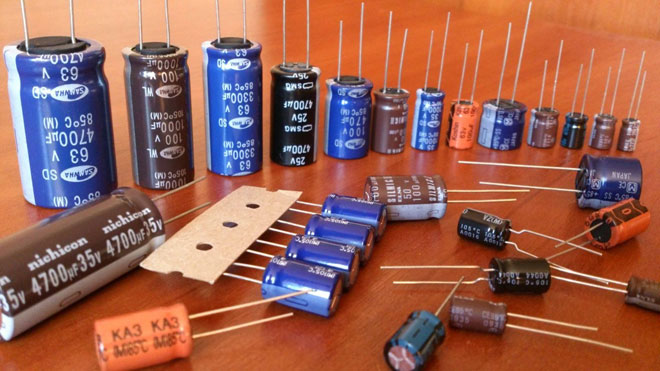
Aluminum electrolytic.
In this type of device, the anodic lining is made of aluminum foil. The surface is coated with a metal oxide dielectric. The cathode pad is a solid or liquid electrolyte, which is chosen so that the oxide layer on the foil is regenerated during operation. Self-repair of the dielectric extends the operating time of the element.
Capacitors of this design require that the polarity be observed. Reversing the polarity will tear the case.
Devices with counter-sequential polar assemblies inside are used in 2 directions. The capacity of aluminum electrolytic cells reaches several thousand μF.
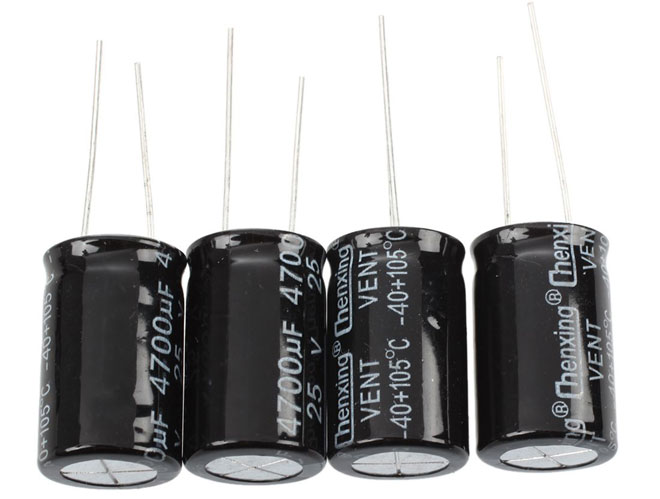
Tantalum electrolytic
The anode electrode of such devices is made of a porous structure, which is obtained by heating up to 2000°C of tantalum powder. The material has the appearance of a sponge. The porosity increases the surface area.
By means of electrochemical oxidation, a layer of tantalum pentoxide up to 100 nanometers thick is deposited on the anode. The solid dielectric is made of manganese dioxide. The finished construction is pressed into a compound, a special resin.
Tantalum products are used at current frequencies above 100 kHz. Capacitance is created up to hundreds of μF, with operating voltages up to 75 V.
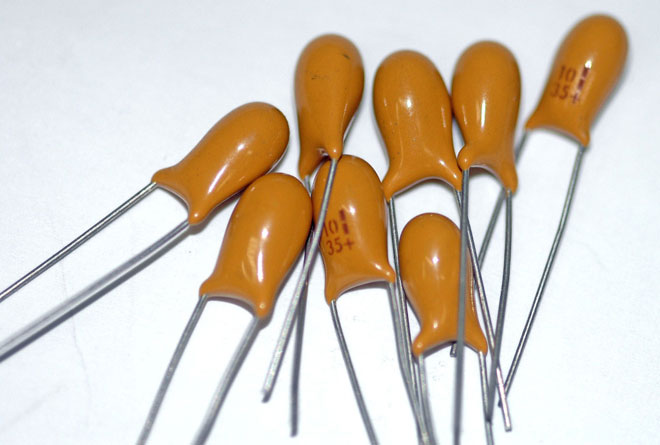
Polymer
Capacitors use a solid polymer electrolyte, which offers a number of advantages:
- the service life is increased up to 50 thousand hours;
- parameters are maintained when heated up;
- wider range of current ripple;
- resistance of pins and terminals does not shunt capacity.
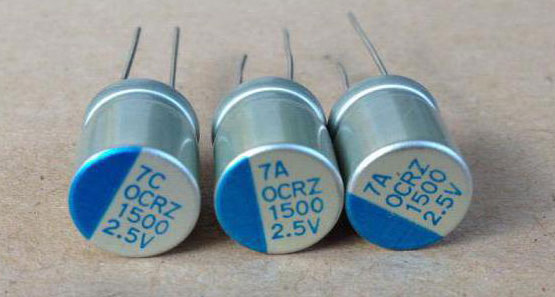
Film
Dielectric in these models is Teflon, polyester, fluoroplastic or polypropylene film.
The covers are foil or metal sputtering on the film. The design is used to create multilayer assemblies with increased surface area.
Film capacitors have a capacity of hundreds of μF at miniature size. Depending on the placement of the layers and contact leads, axial or radial shapes of the products are made.
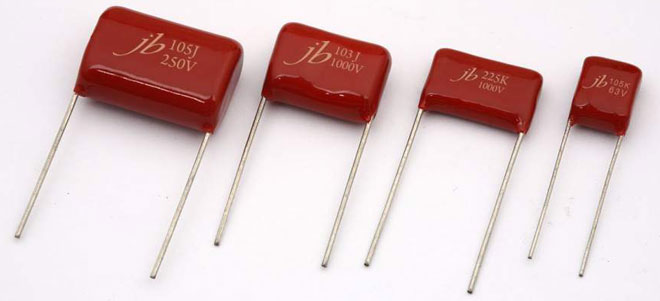
Some models have a rated voltage of 2 kV or higher.
What is the difference between polar and non-polar
Non-polar allow capacitors to be included in a circuit without regard to the direction of current. Elements are used in filters of alternating power supplies, amplifiers of high frequency.
Polar products are connected in accordance with the marking. If connected in the opposite direction, the device will fail or will not work properly.
Polar and non-polar capacitors of high and low capacity differ in dielectric design. In electrolytic capacitors, if the oxide is applied to 1 electrode or 1 side of paper, film, the element will be polar.
Models of non-polar electrolytic capacitors in which metal oxide is applied symmetrically on both surfaces of the dielectric are included in circuits with alternating current.
Polar capacitors are marked as positive or negative electrodes on the case.
What the capacitance of a capacitor depends on
The main function and role of a capacitor in a circuit is to accumulate charges and an additional role is to prevent leakage.
The capacitance of a capacitor is directly proportional to the dielectric constant of the medium and the area of the plates, and inversely proportional to the distance between the electrodes. Two contradictions arise:
- To increase the capacitance, the electrodes need to be as thick, wide and long as possible. At the same time, the size of the device cannot be increased.
- In order to hold the charges and to provide the necessary force of attraction, the distance between the plates is minimal. At the same time, the breakdown current cannot be reduced.
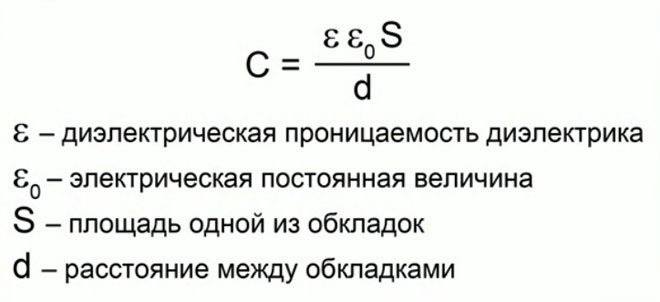
To solve the contradictions, the developers use:
- multi-layer structures of the dielectric-electrode pair;
- porous anode structures;
- replacement of paper by oxides and electrolytes;
- parallel inclusion of elements;
- filling the free space with substances with increased dielectric permittivity.
Capacitor sizes are decreasing and characteristics are getting better with each new invention.
Related articles:
